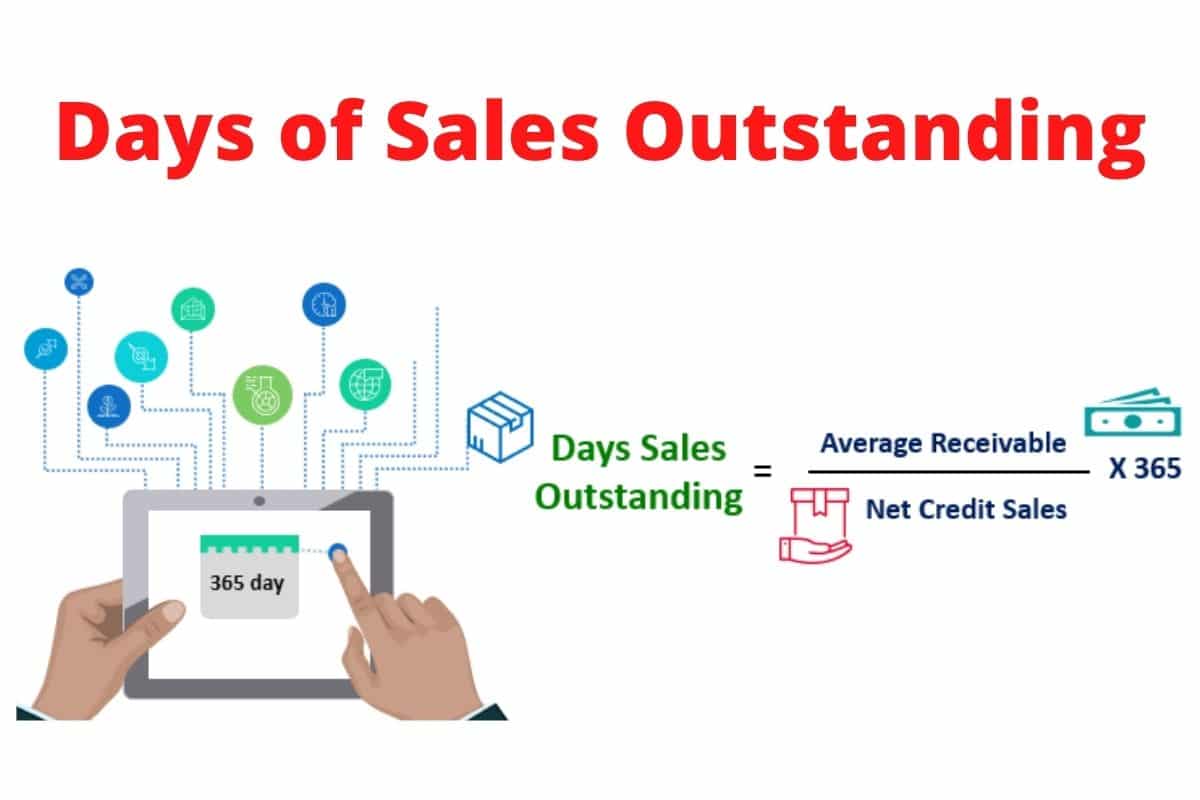Many business analysts point out that poor cash management is the leading cause of business bankruptcy. If your company’s cash flow needs some attention, don’t panic! Analyzing a few simple financial metrics can make a big difference. One of the most important is the days of sales outstanding (DSO) ratio. This post will explain what this formula is, how to do a DSO calculation, and how you can improve your DSO. Ready to learn more.
What is Days of Sales Outstanding – DSO?
Days of Sales Outstanding (DSO) is a measure of the average number of days it takes for a business to collect payment after a sale. Often determined monthly, quarterly, or annually, the DSO can be calculated by dividing the number of accounts receivable during a given period by the total value of loan sales in the same period and multiplying the result by the number of days in the period measured.
How to use Days of Sales Outstanding (DSO)
An effective way to use days of sales outstanding measurement is to track a trend line month after month. This shows any change in the company’s ability to charge its customers. If a company is very seasonal, a variation is to compare the measurement with the same metric for the same month of the previous year. This provides a more reasonable basis for comparison.
Regardless of how this measure is used, keep in mind that it is typically made up of a large number of outstanding invoices and therefore does not provide information on the ability to collect a particular invoice. Therefore, it should be supplemented by a continuous review of the outdated claims report and collection letters from the collection staff.
DSO can be a useful measure for an acquirer. You can search for companies with abnormally high DSO numbers to acquire the companies and then improve your loan and collections operations. In this way, they can withdraw part of the working capital of the acquired companies, which reduces the amount of the initial acquisition costs.
Days Sales Outstanding Calculation
Income is created each time you make a sale. However, this often just means that an invoice has been created. It doesn’t count as cash until you see the money in your bank account. This means you have to focus on collecting that cash. Too often, businesses work to increase their sales regardless of their actual cash position, and this can be a disaster for a small business owner.
With that in mind, let’s first look at some key terms:
Cash sale:
A sale that takes place immediately. Payment can be made by card or other forms such as cash, check or electronic check. The defining characteristic is the time of payment, at the time of sale.
Sale of loan:
A sale that will be completed at a later date. Payment can also be made in cash and viewed as a loan sale. The defining characteristic is the timing of payment in the future after the services have been provided.
Accounts receivable (A/R):
The billing term for all outstanding invoices due to your company on a certain date. If you use an accountant for your business, you can provide this information. If not, you can find it yourself by looking at your balance sheet and income statement.
Your days of sales outstanding quota shows the average number of days it will take you to collect the sales on your loan. Using this relationship can streamline the accounts receivable process and increase your profitability by adding predictability to your business. DSOs are often billed monthly, quarterly, or annually.
For your DSO calculation you need:
- To determine a period
- Your opening balance
- Your account balance
- Total loan sales during this period
The days sales outstanding formula is:
DSO = (Average Accounts Receivable / Total Credit Sales) x (Number of Days)
How to calculate days of sales outstanding
To find out the days of sales outstanding, you must obtain information from an old accounts receivable report or a balance sheet. Once this information is collected, you can calculate your DSO.
#1. Determine the period to cover
It is up to you to determine the amount of time you want to cover when calculating the DSO. Smaller businesses may find it more useful to calculate the DSO on a quarterly basis, although businesses that sell on credit frequently must do a DSO calculation on a monthly basis.
#2. Calculate the total amount of initial claims for the period
This information can be found on a balance sheet prepared on the first date of the period you are investigating. For example, if you want to calculate the DSO for the first quarter of 2020, take a balance sheet as of January 1, 2020 to find the beginning balance of your accounts receivable.
#3. Calculate the total amount of accounts receivable at the end of the period
You will receive the ending balance of your accounts receivable in the same way. Just this time, you will prepare a balance report for March 31, 2020.
#4. Determine the average claims for the period.
This is a simple calculation. Just take your beginning balance and your ending balance for the period you selected.
#5. Calculate the total loan turnover for the period.
This calculation can be a bit tricky if you don’t track cash sales separately. If you do this, all you need to do is find out your total sales for the period. Be sure to subtract any returns or adjustments. If you don’t track cash sales automatically, you’ll need to subtract them as well.
#6. Determine the number of days in the specified period
When calculating the DSO for the month, use the number of days in the month. In our example, we calculate the DSO for the quarter. Therefore, we must add the number of days in each month.
- January: 31 days
- February: 29 days (leap year)
- March: 31 days
- So the total number of days for the first quarter would be 91.
How to Improve DSO
After knowing your DSO, you can determine if you need to improve it. If you have a healthy DSO, congratulations! Monitor regularly to make sure your business remains in good financial shape.
If your DSO needs an upgrade, don’t despair. A few changes to your collection processes can make a big difference. You can improve your DSO by:
- Advance payment whenever possible – Many of your customers will not resist prepayment. All you have to do is ask!
- Offer Your Clients Multiple Payment Options – Most clients want to pay you for your services, but you have to make them feel comfortable! Make sure to accept both credit cards and electronic checks.
- Make Payments As Automated As Possible – If your customers rely on talking to someone in your company to pay a bill, you’re limiting their options and wasting time. Set up recurring online payments so your business can collect invoices automatically.
DSO limitations
As with any metric used to measure the efficiency of a business, there are some limitations todays of sales outstanding that any investor should consider before using it.
When using DSO to compare the cash flows of multiple companies, it is easier to compare companies in the same industry, ideally if they have similar business models and sales figures. As mentioned above, companies of different sizes often have very different capital structures, which can greatly affect DSO calculations, and this often applies to companies in different industries as well.
The DSO is not particularly useful for comparing companies with significant differences in the percentage of credit sales, because determining the DSO of a company with a low percentage of credit sales does not say much about the cash flow of that company. The comparison of these companies with companies with a high percentage of loan sales does not usually suggest much importance either.
Additionally, the DSO is not a perfect indicator of the efficiency of a company’s accounts receivable, as fluctuating sales volumes can affect the DSO, and an increase in sales often lowers the DSO.
However, Delinquent Days Sales Outstanding(DDSO) is a good credit rating alternative that can be used in conjunction with DSO. Like any metric that measures a company’s performance, the DSO should not be viewed alone, but should also be used with other metrics.
Conclusion
By tracking your DSO over time, you can see trends, stay current when DSO increases, and make adjustments to the accounts receivable process.
We also Recommend:






